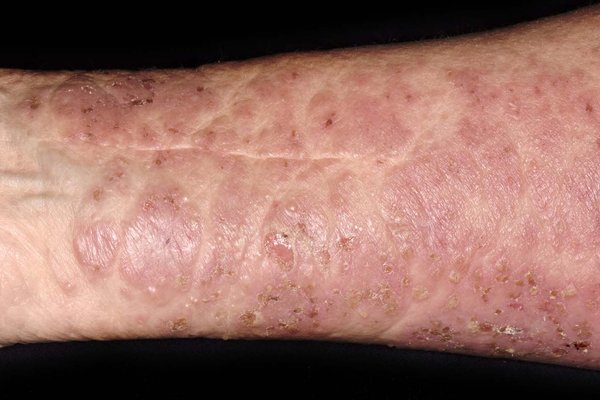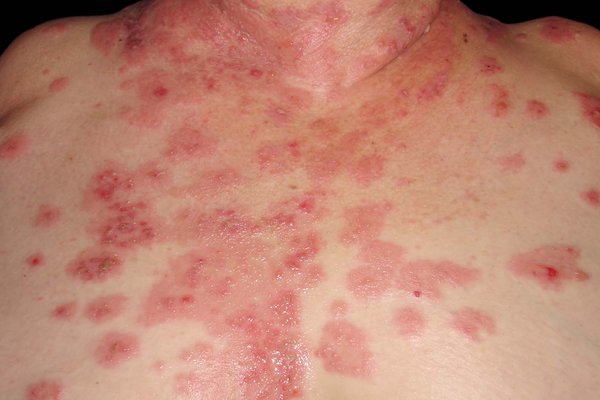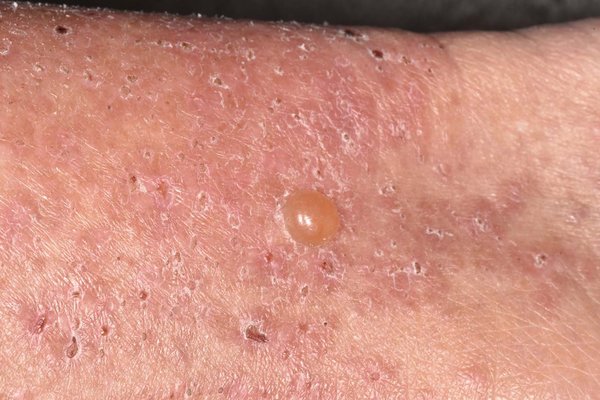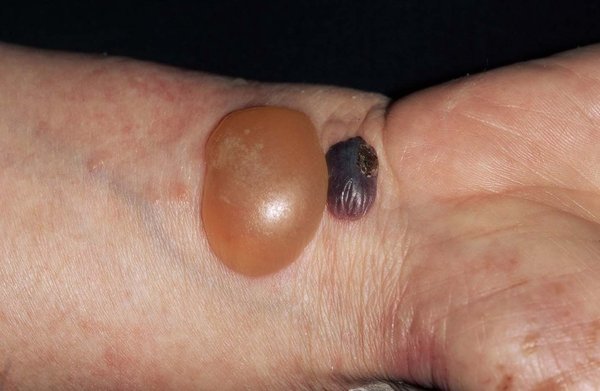
Bullous pemphigoid usually starts with an itchy, raised rash on the skin, usually the backs of the knees, insides of the armpits and elbows, hands, feet or tummy.

The sore, itchy patches look red or pink on white skin and dark reddish-brown on brown or black skin.

It can affect large areas of the body or limbs.

After a few weeks, small blisters may appear.

The blisters can grow quite big and may contain blood.
Some people may also get blisters in their mouth, which can cause problems swallowing (dysphagia).
Not everyone gets blisters. If you do, they may keep coming and going for months or years.
Bullous pemphigoid eventually goes away on its own.
If a GP thinks you have bullous pemphigoid, they may refer you to a specialist for tests and treatment.
The main treatments for bullous pemphigoid are:
Treatment can help your skin heal, stop new patches or blisters appearing, and lower the chances of your skin getting infected.
Your skin should eventually heal without scarring, but it might be a bit darker than it was before.
Do not burst your blisters yourself unless you have been shown how to by a nurse. Your skin might get infected.
Bullous pemphigoid can sometimes cause serious problems and may be life threatening to people at higher risk of complications.
The main risks are:
Steroids will be used as little as possible, and at the lowest possible dose, to help avoid side effects.
It's important to go to check-ups with your doctor so problems can be found and treated early.
Bullous pemphigoid is caused by a problem with the immune system, the body's defence against infection. Instead of attacking germs, it attacks and damages the skin.
It's not always clear why this happens, although certain things may trigger it.
These include:
